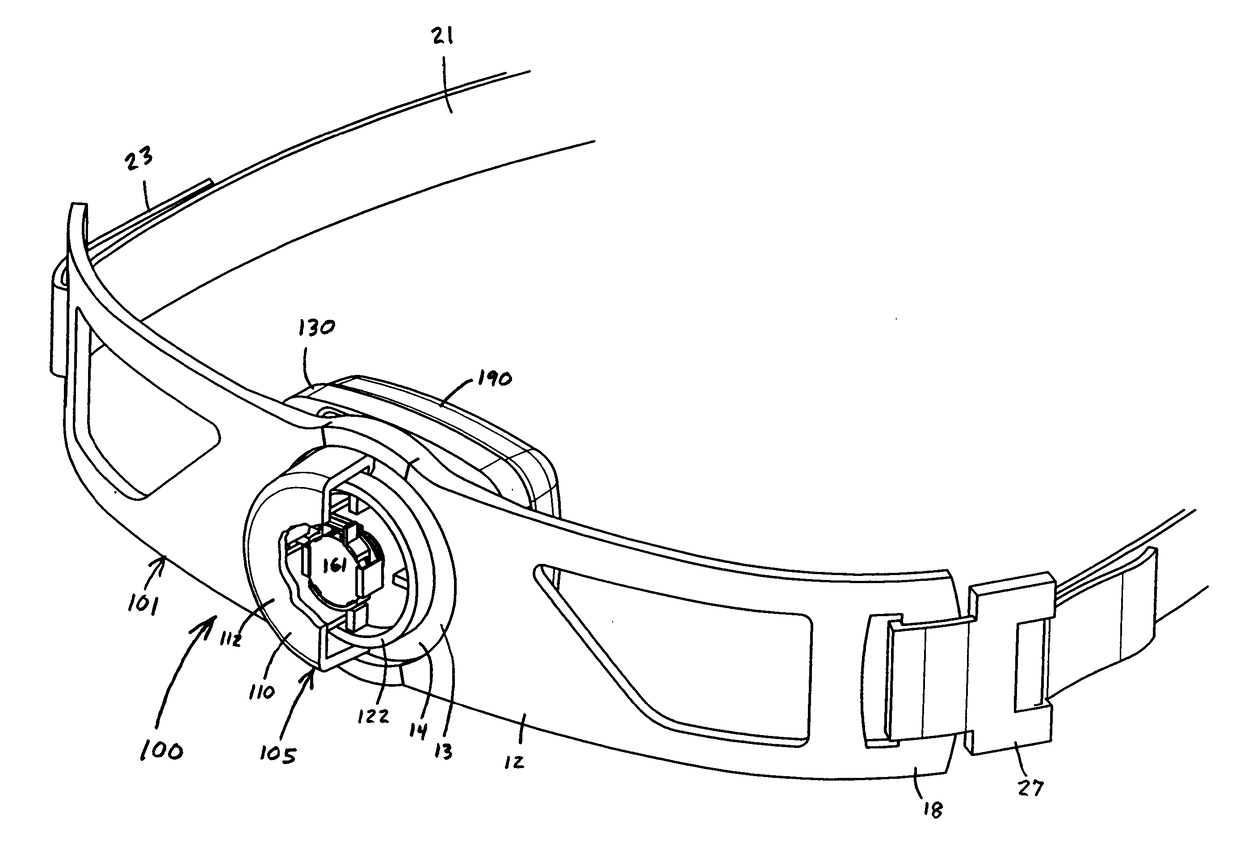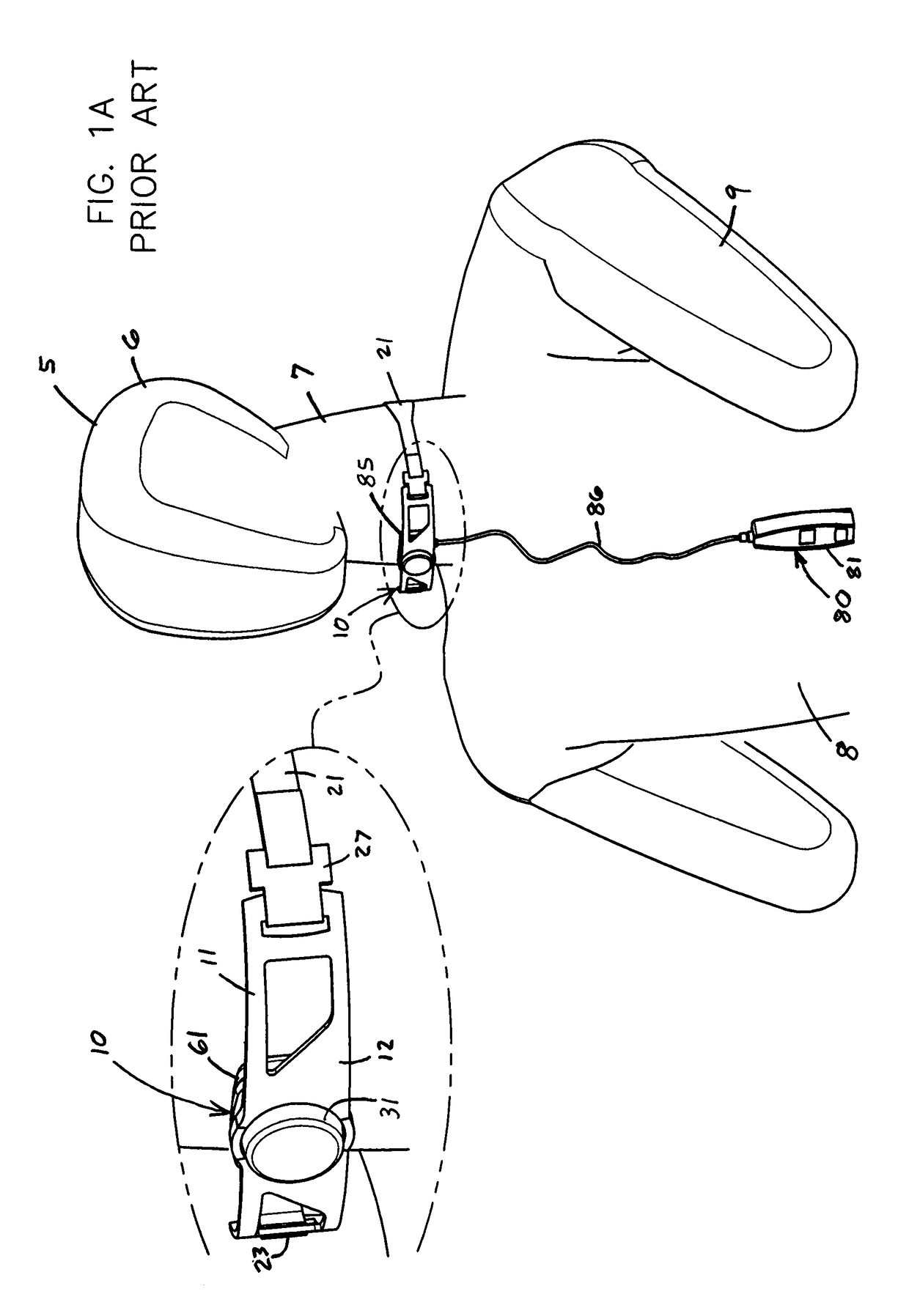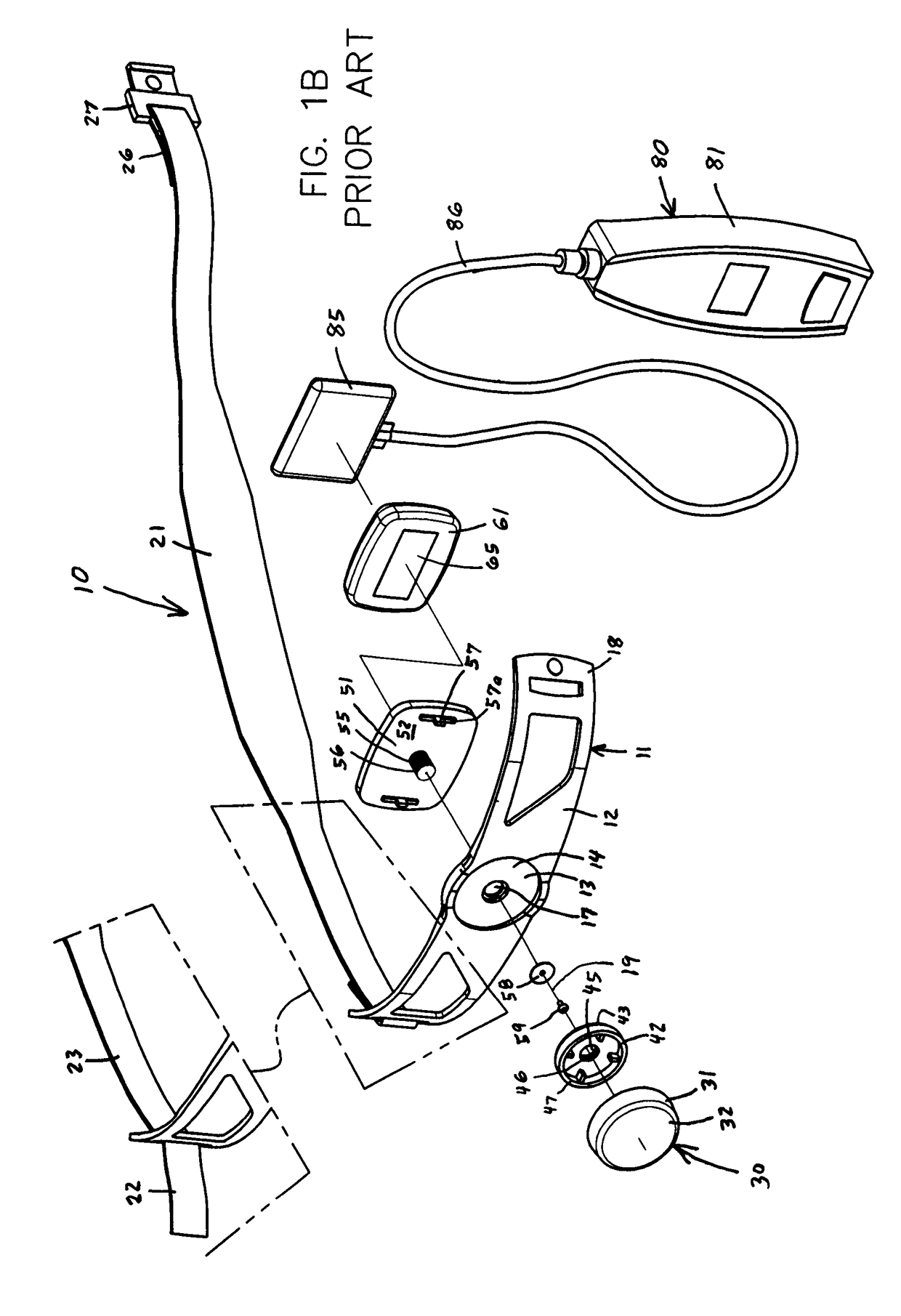Long-Term Therapeutic Pressure Applicator and Real-Time Monitoring System
a technology of pressure applicator and monitoring system, which is applied in the field of long-term therapeutic pressure applicator and real-time monitoring system, can solve the problems of not displaying the actual, applied force or pressure to increase or decrease, and the patient has no accurate way to tell how much pressure has deviated
- Summary
- Abstract
- Description
- Claims
- Application Information
AI Technical Summary
Benefits of technology
Problems solved by technology
Method used
Image
Examples
first embodiment
[0056]The present invention pertains to a long-term therapeutic pressure applicator and monitoring device generally indicated by reference numbers 100 and a real-time pressure monitoring system generally represented by reference number 200 as shown in FIGS. 2-11. The therapeutic pressure applicator and monitoring device 100 has a securing member or mechanism 101 to secure a pressure adjusting mechanism 105 to the patient 5. Depending on the body part involved, the securement member or mechanism 101 can take a variety of forms. In a first embodiment, the therapeutic pressure applicator and monitoring device 100 is secured to the neck 7 to reduce esophageal reflux as in FIGS. 2A-J. The securing mechanism 101 is the conventional Reza neck band 11 used by the treating physician to apply an approximate pressure to the patient that is close to the desired pressure. As noted above, the band 11 has the semi-flexible strap or securement bracket 12 with its central recess 13, front and rear s...
embodiment 300
Automated Applicator Embodiment 300
[0083]An automated embodiment of the therapeutic pressure applicator and monitoring device 300 is shown in FIGS. 3A and 3B. The automated device 300 automatically adjusts the pressure applied to the neck 5 of the patient 5 so that the applied pressure is at a specific predetermined pressure or within a specific predetermined pressure range. The applicator 300 has a securing mechanism 101 in the form of the conventional neck band 11, and many of the components of the pressure adjusting mechanism 305 of the applicator 300 are interchangeable with the pressure adjusting mechanism 105 of the manually applicator 100. The pressure adjusting mechanism 305 of the automated applicator 300 has the same pressure sensor sensing component 130, sensor 140, computer module 150, power supply 160, pressure focusing plate 180 and cushion 190 as the manual applicator 100. The pressure dial 310 and programming of the CPU 151 of the automated applicator 300 are modifie...
embodiment 400
Universal Bracket Embodiment 400
[0086]An embodiment of the therapeutic applicator 400 with a more universal securement mechanism is shown in FIGS. 4A and 4B. The applicator 400 has the same pressure adjusting mechanism 305 as in the automated applicator 300, but the securing mechanism 401 is in the form of a universal securing bracket 402. The bracket 402 has a central recess 403, front and rear surfaces 404 and 405, a central opening 407 and opposed lateral ends 408. The rear surface 405 of the strap bracket 402 has two spaced slots 415a. The common center of the central recess 403 and opening 407 forms a centerline 409 for the applicator 400. A strap (not shown) or some other form of fastener is secured to each of those lateral ends 408 to secure the device 400 to the body of a patient 5.
PUM
 Login to View More
Login to View More Abstract
Description
Claims
Application Information
 Login to View More
Login to View More - R&D
- Intellectual Property
- Life Sciences
- Materials
- Tech Scout
- Unparalleled Data Quality
- Higher Quality Content
- 60% Fewer Hallucinations
Browse by: Latest US Patents, China's latest patents, Technical Efficacy Thesaurus, Application Domain, Technology Topic, Popular Technical Reports.
© 2025 PatSnap. All rights reserved.Legal|Privacy policy|Modern Slavery Act Transparency Statement|Sitemap|About US| Contact US: help@patsnap.com



